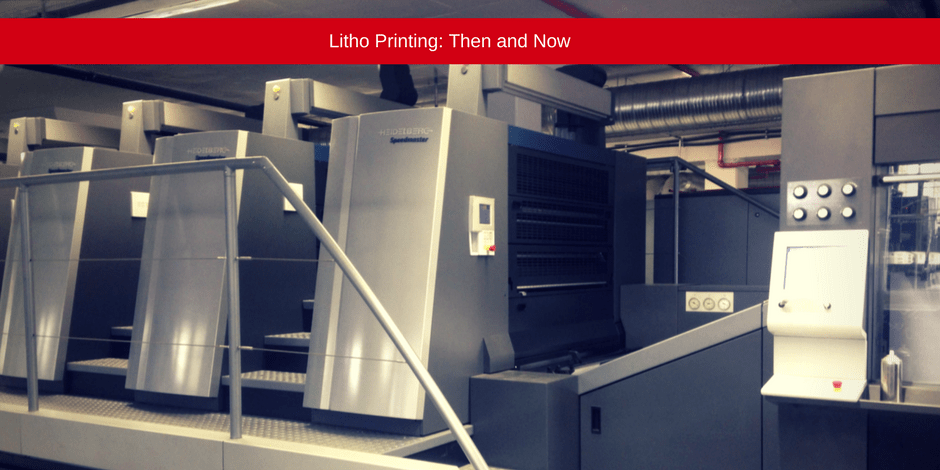A Comprehensive Overview to Understanding Litho Printing Strategies
The globe of litho printing, a technique originating from the late 18th century, is a fascinating blend of background, innovation, science and art. This extensive guide will untangle the complexities of this printing technique, from the composition of litho inks to the obstacles faced in contemporary applications. As we venture right into the details of lithography, the significance of automation and sustainability in ensuring its future importance becomes significantly clear. Remain with us as we trip right into the fascinating realm of litho printing.
The Historical Evolution of Litho Printing
The historic trajectory of litho printing, a crucial innovation in the world of communication, is an exciting tale of human resourcefulness. Birthed in the late 18th century by Alois Senefelder, this technique was initially an economical method of releasing staged jobs. Lithography, originated from the Greek words for 'rock' and 'to create', made use of a smooth stone surface area to move photos onto paper. The procedure developed with the introduction of the rotating press, which substantially raised performance (litho printing). In the 20th century, the technology of balanced out lithography changed the industry, permitting automation of top quality prints. Each phase of litho printing's advancement showcases humanity's ruthless quest of performance and top quality in visual communication.
Translating the Scientific Research Behind Litho Printing Inks
Moving on in the expedition of litho printing techniques, the focus currently changes to the science behind litho printing inks. The composition of these inks, their drying procedure, and color mixing techniques create the backbone of this intricate art kind. Recognizing these components is vital to understanding the craft and achieving the preferred print outcomes.
Composition of Litho Inks
In lithographic printing, the fundamental role of litho inks can not be overstated. Pigments, the color-providing aspects, are finely ground bits suspended in the lorry, a fluid that brings the pigment onto the printing surface area. Each part plays an important component in the final print's top quality, making the accurate formula of litho inks a complex science.
Ink Drying Process
From the composition of litho inks, focus turns to the fascinating process of ink drying. 2 primary methods are used in litho printing: oxidative drying out and absorption. Absorption, on the various other hand, involves the ink permeating into the paper fibers, which is a much faster procedure however can lead to less vivid shades.
Shade Combining Techniques
While the drying procedure plays a vital role in litho printing, the scientific research of shade mixing techniques holds equivalent value. The scientific research behind litho printing inks likewise takes into account the openness of the ink, which influences just how colors overlay and mix.
The Art and Design Aspects in Litho Printing
Litho printing breathes life into art and design through its distinct components. Litho printing suits a selection of shades, enabling artists to develop lively and vibrant prints. This combination of accuracy and flexibility makes litho printing a preferred choice for many artists and designers.
Modern Applications of Litho Printing Methods
Litho printing techniques have discovered comprehensive usage in the modern-day business industry. Its impact and relevance proceed to grow with the arrival of brand-new advancements and modern technologies in the field. This area will discover these contemporary applications and the transformative role they play in the printing market.
Commercial Litho Printing Makes Use Of
In today's digital age, one may question the relevance of traditional printing methods. Yet, litho printing stays an important component of the industrial market. High-volume printing jobs, such as the production of books, newspapers, and product packaging, rely upon litho printing for its ability to supply exceptional image top quality and price effectiveness. The process, which involves transferring a tattooed picture from a plate onto a rubber blanket and after that to the printing surface area, provides unparalleled uniformity. This makes it suitable for work calling for a big print run. Litho printing also provides a wide color range, above that of digital printing. This makes it the best selection for jobs that demand vibrant, top quality color reproduction.
Developments in Litho Printing
Pressing the boundaries of conventional techniques, modern improvements have actually fueled a host of developments in litho printing. These breakthroughs have not only improved the top quality and effectiveness of litho prints however additionally expanded its application range. One noticeable advancement is electronic litho printing, which incorporates the virtues of electronic innovation with litho's top notch output. This hybrid design uses faster configuration times, reduced waste, and enables on-demand printing. Another remarkable advancement is the intro of ecologically friendly inks. These inks, made from veggie or soy-based options, have considerably reduced the sector's environmental influence. litho printing. Furthermore, the advancement of innovative plate modern technology has streamlined the printing procedure, leading to sharper pictures and enhanced shade integrity. These advancements emphasize the long-lasting significance of litho printing in the modern-day globe.
Exploring the Process of Litho Printing: Step by Step
Obstacles and Solutions in Contemporary Litho Printing

Despite the precision and custom that litho printing proudly upholds, it is not without its set of contemporary obstacles. One of the most prevalent concerns include the high preliminary arrangement cost, trouble in printing variable data, and ecological issues because of chemical usage. Remedies are emerging as modern technology develops. Digital litho printing permits for economical brief runs and simple modification, resolving the problem of variable data. Environmentally-friendly inks and much safer plate-making processes reduce ecological worries. Additionally, improvements in automation have actually reduced labor expenses, further democratizing the lithography process. Hence, while there are obstacles, the litho printing sector is proactively adjusting to fulfill them head-on, guaranteeing its importance in the future.
Final thought
In conclusion, litho printing, with its rich history and clinical ins and outs, holds a significant place in the print sector. The future of litho printing hinges on its capability to adapt to these transforming needs, attesting its enduring value in an evolving market.
